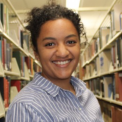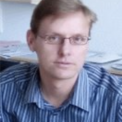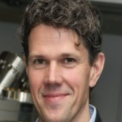Now that Webb has launched, successfully deployed, and reached its destination at L2, we can outline the plans for the James Webb Space Telescope (JWST) guaranteed time observations (GTO). Heidi Hammel’s cycle 1 GTO programs focused on Solar System science include detailed time-resolved compositional mapping of the Martian surface, short- and medium-term climate monitoring of the giant planets, and exploratory spectroscopic studies of the full menagerie of asteroids and comets, from near-Earth objects to the Kuiper belt. These programs are designed to be benchmark observations for the JWST mission. In this talk I will introduce JWST, its capabilities for the Solar System and some of the science it will accomplish during its first year of operation. The focus will be on planetary systems with Ice Giant atmospheres as a detailed example. As a queer, Black woman I will also share some of the Equity, Diversity and Inclusion work I have done over my career.
Events Calendar View
-
Departmental Colloquium
Mar 3, 2022
Planets, moons, and rings from the James Webb Space Telescope during Guaranteed Time Observations
-
CSP Lunch Seminar
Mar 15, 2022
Accreting black hole binary systems: hydrodynamics on GPUs
-
Departmental Colloquium
Mar 17, 2022
Time-resolved optical microscopies of nanomaterials
Time-resolved optical spectroscopic techniques provide direct insight into the excited state dynamics and energies of materials. Implemented in a microscopy platform, these techniques can be utilized to establish spatio-temporal maps and to visualize photo-induced phenomena. In this talk, I will discuss three different implementations developed to address particular sample properties. First, we use time-resolved photoluminescence (PL) microscopy to visualize charge carrier diffusion in hybrid halide thin films. We implemented a scheme in which the detection point is scanned with respect to the excitation point. Pulsed laser excitation in combination with time-resolved detection then allows for the observation of charrier transport within the film. In the second example, we implemented both transient absorption and time-resolved PL microscopy to study the ultrafast dynamics of excitons in single semiconducting carbon nanotubes. This allowed us to formulate a unified model by combining unimolecular exciton decay and ultrafast exciton-exciton annihilation on a time-scale reaching down to 200 fs. In the third implementation, we explore the non-linear response of plasmonic nanoantennas using phase-shaping of broadband laser pulses. We find that the enhancement provided by resonant nanoantennas can be predicted from a complex frequency dependent field enhancement factor. We then demonstrate that the spectral phase associated with this factor can be utilized for phase-selective confocal imaging.
-
CSP Lunch Seminar
Mar 22, 2022
"Coupling Lattice Boltzmann and Molecular Dynamics: A Versatile Tool for the Study of Soft-Matter Hydrodynamics
-
Departmental Colloquium
Mar 24, 2022
A perspective on petahertz (nano)electronics
Ultrafast electronic dynamics of solid-state materials, particularly under light excitation, are of great interests both fundamentally and practically due to the wide applications of optoelectronic devices, such as transistors, photovoltaics, or photodetectors. With the ability to control electronic dynamics in solids on attosecond time scales, the development of lightwave electronics holds promise for realizing ultrafast signal processing devices at frequencies up to the petahertz regime, surpassing current technology by orders of magnitude.
The development of light-driven petahertz electronics is inherently connected to solid state nanophysics. First, the natural length scale of electron motion on the few attosecond time scale is on the order of one nanometer. Second, for the development of petahertz integrated circuits, the devices have to be both on nanometer length scales and be based on non-resistive processes, such as ballistic electron transport. Nanomaterials or nanostructured solids thus play a crucial role in the development of future on-chip petahertz electronics devices.
The talk will give a broader introduction into this field and summarize a few recent results from our group. A perspective will be given on the next steps towards the implementation of petahertz signal processing.
-
CSP Lunch Seminar
Mar 29, 2022
Simulating stellar core collapse
Page 115 of 121, showing 6 records out of 723 total, starting on record 685, ending on 690




